Home
Woodworking
Hand Railings
Skirt Boards
Crown Molding
Bidding
Wainscoting
Chair Rail
Interior Doors
Closet Doors
Exterior Doors
Installing Doors
Baseboard
Installing Baseboard
Windows
Install Cabinets
Hand Tools
Power Tools
Blog
Contact
Link Partners
Tool Reviews
About Me
Can't Find Something?
Check The Sitemap
Site Map
Woodworking
Hand Railings
Skirt Boards
Crown Molding
Bidding
Wainscoting
Chair Rail
Interior Doors
Closet Doors
Exterior Doors
Installing Doors
Baseboard
Installing Baseboard
Windows
Install Cabinets
Hand Tools
Power Tools
Blog
Contact
Link Partners
Tool Reviews
About Me
Check The Sitemap
Site Map
[?] Subscribe To This Site
Coping Baseboard Corners
Carpenters Tricks Coping Baseboard CornersOne of the oldest, but simplest, carpenters tricks is coping baseboard corners. This is an option with any baseboard job and looks much better than just mitering the ends to fit the corner juncture. That method nearly always looks bad and coping the joint solves that problem; especially when you have a finicky client or customer.
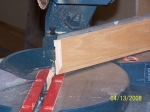
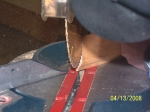
The coping method of baseboard installation involves placing one piece of baseboard that goes all the way into the corner of the wall. The profile of that piece is cut into the end of the second piece of material that forms the corner joint. All that needs to be done is to use a pencil and draw the profile as closely as possible on the one baseboard, then cut along those lines.
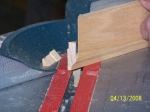
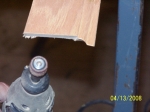
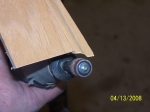
After you get the piece cut as needed, lay it in place and see how tightly the two pieces fit there. Be sure to have some sandpaper on hand to adjust as required. Once the contour is as near perfect as you can get, position the baseboard and fasten it in place. The result is a tight corner that looks as if it were made that way.
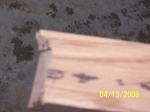
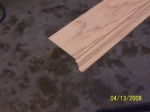
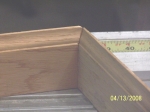
Coping baseboard is a universal method for all types of baseboards. It works well with straight baseboard material as well as fancier, routed designs. If done properly, the finished corner looks as if it were constructed in that fashion. Unless someone looks very closely at the corner, it will appear to be mitered and fitted.
However, coping baseboard is especially helpful with odd shaped baseboards or mid-wall trim. Some of this type of trim is formed and can be extremely difficult to fit tightly at the corners. If you were to try the standard miter fitting, your results will be fleeing, mistakes are easy to make and those mistakes are impossible to conceal once made.
In these cases, it may be necessary to use another piece of baseboard or go buy another piece of material. So coping baseboard corners is not only about aesthetics, but also working smarter and keeping job costs down. This means happy customers, higher profits and referrals for other jobs. All in all, it is a winning situation for everybody concerned.
After coping baseboard, the baseboard can be painted or stained accordingly. If you desire, you may use wood filler to conceal the juncture of the two pieces of baseboard. Not to cover up mistakes, but to keep the corners clean, tight and sharp. After the painting, this will be entirely invisible. That is the mark of true professionalism.
So take a little time to learn this coping baseboard corners technique. Coping the corners is easy to do, saves you time, reduces errors, pleases even the fussiest client and results in a professional looking job every time. Even when you are using the oddest shaped baseboard material, this cornering method works well. Moreover, if you DO happen to make a small error in cutting, it is easy to conceal it with wood filler (if needed) and the finishing paint or stain.
Baseboard Coping Video
Return From Coping Baseboard Corners page to Home - Finishcarpentryhelp.com


